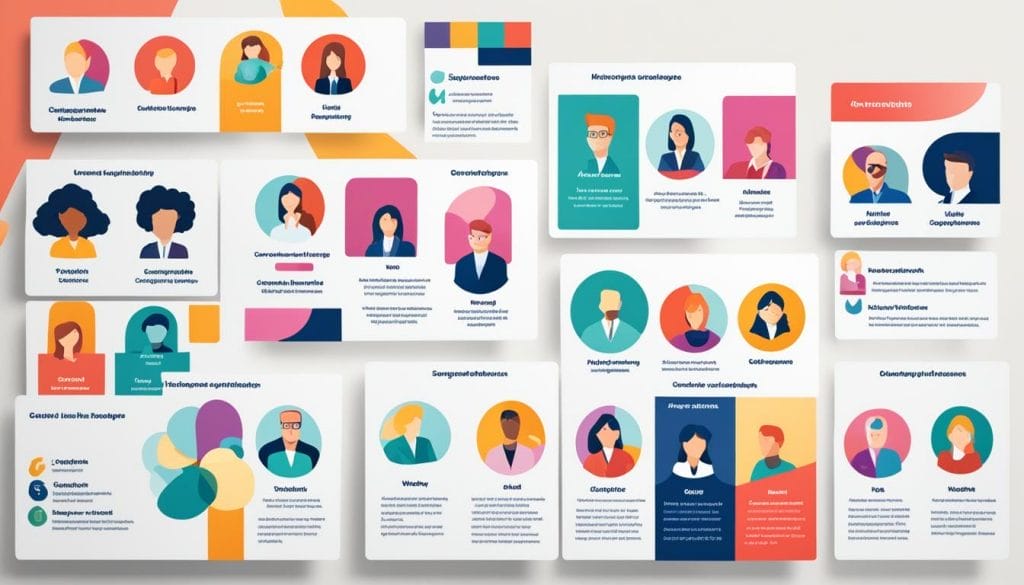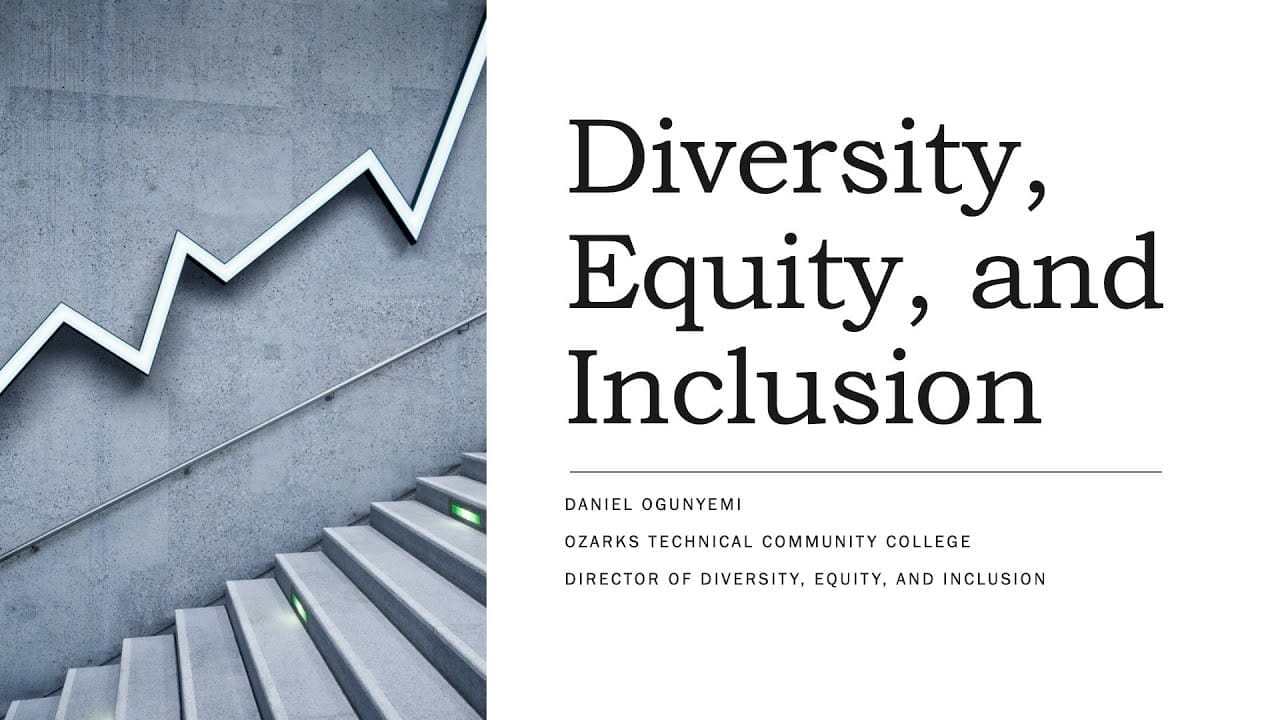Did you know that organizations with diverse workforces are 35% more likely to outperform their competitors? Diversity and inclusion are not just buzzwords; they are critical elements of a successful and inclusive work environment. Creating comprehensive diversity training presentations is essential in promoting inclusion, respect, and equality among employees. Hyperspace, a leading company specializing in DEIA (Diversity, Equity, Inclusion, and Accessibility) training, offers a solution that can quickly and easily enhance workplace culture. Learn more about their effective diversity training PPT at https://hyperspace.mv.
Key Takeaways:
- Diverse workforces have a competitive advantage, with a 35% higher likelihood of outperforming competitors.
- Creating comprehensive diversity training presentations is crucial for promoting inclusion and equality.
- Hyperspace offers an effective diversity training PPT that can enhance workplace culture.
What is Diversity and Inclusion?
Diversity and inclusion are fundamental concepts in today’s workplace. Understanding what they entail is crucial for fostering a positive and inclusive environment. Diversity encompasses the various characteristics and differences that make individuals unique, such as race, gender, ethnicity, and background. It encompasses the richness of perspectives, experiences, and talents brought by a diverse workforce.
Inclusion, on the other hand, goes beyond mere representation. It is about creating an environment where everyone feels welcome, respected, and valued. Inclusive workplaces foster a sense of belonging, ensuring that individuals can fully participate, contribute, and thrive, regardless of their differences.
To learn more about the importance of diversity and inclusion in the workplace, you can visit the Society for Human Resource Management website. They provide valuable insights and resources on creating inclusive and equitable work environments.
Benefits of Diversity and Inclusion
Diversity and inclusion play a vital role in empowering organizations to thrive and succeed in a rapidly changing world. By embracing and promoting a diverse and inclusive culture, companies can unlock numerous benefits that have a profound impact on their performance and overall success.
Improved Decision-Making
A key advantage of diversity and inclusion is the ability to tap into a wide range of perspectives and experiences. When diverse individuals come together, they bring unique insights and alternative viewpoints that can lead to more comprehensive and informed decision-making processes. By considering a variety of thoughts, ideas, and opinions, organizations can make better choices that reflect the needs and interests of diverse stakeholders, resulting in more effective strategies and outcomes.
Enhanced Creativity and Productivity
Diverse teams have been proven to be more creative and innovative. By bringing together individuals with varying backgrounds, skills, and knowledge, organizations foster an environment that encourages the generation of fresh ideas, promotes out-of-the-box thinking, and stimulates creative problem-solving. With diverse perspectives and approaches, employees can collaborate more effectively, challenge conventional norms, and explore new possibilities, ultimately increasing productivity and driving continuous improvement.
Improved Employee Engagement, Satisfaction, and Retention
Creating an inclusive work environment where employees feel valued, respected, and included has a significant impact on their engagement, satisfaction, and commitment to the organization. Inclusive organizations cultivate a sense of belonging, where individuals can express their authentic selves, contribute their unique skills, and thrive personally and professionally. When employees feel supported and valued, they are more likely to be engaged, motivated, and loyal to the company, leading to higher levels of job satisfaction and increased employee retention.
Enhanced Brand Reputation and Financial Performance
A company that prioritizes diversity and inclusion not only reaps internal benefits but also improves its brand reputation externally. In today’s socially conscious marketplace, consumers and investors are increasingly looking for companies that demonstrate a commitment to diversity and inclusion. By fostering an inclusive environment, organizations gain a reputation as an employer of choice, attract top talent, and build stronger relationships with customers and stakeholders. Furthermore, research consistently shows a positive correlation between diverse and inclusive organizations and financial performance, with companies that prioritize diversity and inclusion consistently outperforming their peers.
| Benefits of Diversity and Inclusion | Description |
|---|---|
| Improved Decision-Making | Bringing diverse perspectives leads to more comprehensive and informed decision-making. |
| Enhanced Creativity and Productivity | Diverse teams foster innovative thinking and stimulate creative problem-solving. |
| Improved Employee Engagement, Satisfaction, and Retention | An inclusive work environment increases employee engagement, satisfaction, and retention. |
| Enhanced Brand Reputation and Financial Performance | Prioritizing diversity and inclusion improves brand reputation and drives financial success. |
Challenges of Diversity and Inclusion
While diversity and inclusion offer significant benefits, they are not without their challenges. Overcoming these obstacles is essential to creating a truly inclusive and equitable work environment. Some of the key challenges include:
- Unconscious Bias: Unconscious bias refers to the implicit stereotypes and attitudes that influence our perceptions and decisions. It can hinder diversity and inclusion efforts by perpetuating unfair treatment or exclusion of certain individuals or groups.
- Communication Barriers: Effective communication is crucial for building inclusion. However, language barriers, cultural differences, and varying communication styles can create misunderstandings and hinder collaboration.
- Power Dynamics: Power imbalances within organizations can create barriers to inclusion. Structural and hierarchical systems may limit the participation and voice of marginalized individuals or reinforce unequal power distribution.
- Fear of Change: Embracing diversity and inclusion often requires organizations and individuals to step out of their comfort zones. Resistance to change and fear of the unknown can impede progress and limit the implementation of inclusive practices.
To overcome these challenges, organizations must take proactive steps. Promoting awareness and education about unconscious bias, fostering cross-cultural communication and collaboration, implementing inclusive policies and procedures, and creating a culture of respect and inclusion can help address these obstacles.
How to Structure an Effective Diversity and Inclusion Presentation

Structuring a diversity and inclusion presentation is crucial to effectively convey the message and engage the audience. By following a well-defined structure, you can create a compelling and impactful presentation that promotes understanding and fosters a culture of inclusion.
- Compelling Introduction: Start your presentation with a strong and attention-grabbing introduction. This can include a relevant statistic, anecdote, or personal story that sets the tone for the rest of the presentation.
- Define Key Terms: Provide clear definitions of key diversity and inclusion terms to ensure everyone is on the same page. This will help eliminate misconceptions and facilitate a deeper understanding of the concepts.
- Discuss Benefits and Challenges: Explore the benefits of diversity and inclusion in the workplace, such as increased innovation, creativity, and employee engagement. Acknowledge the challenges that organizations may face when implementing diversity and inclusion initiatives and discuss strategies to overcome them.
- Solutions to Challenges: Offer practical solutions and actionable steps to address the challenges mentioned earlier. This can include training programs, mentorship opportunities, and inclusive policies and practices.
- Real-World Examples: Incorporate real-world examples and case studies to illustrate the impact of diversity and inclusion in different organizations. This will make the presentation more relatable and increase audience engagement.
- Visuals and Stories: Use visuals such as diversity training slides, charts, and graphs to support your key points. Additionally, include stories and testimonials from individuals who have experienced the positive effects of diversity and inclusion in the workplace.
- Call to Action: End your presentation with a strong call to action that encourages participants to take action and contribute to creating a diverse and inclusive work environment. This can include joining diversity and inclusion initiatives, attending training sessions, or promoting diversity in their own teams.
“The most effective diversity and inclusion presentations are those that combine informative content with storytelling and visual elements. By structuring your presentation in a logical and engaging manner, you can create a lasting impact on your audience and inspire positive change in your organization.”
By following these guidelines and incorporating diversity training slides, you can create an effective and memorable diversity and inclusion presentation that drives meaningful change.
Do’s and Don’ts on a Diversity and Inclusion Presentation
In creating a workplace diversity training presentation, it is crucial to embrace diversity, celebrate differences, and promote acceptance. A successful presentation encourages dialogue and understanding among employees, fostering an inclusive and harmonious work environment.
The Do’s
- Do emphasize the value of workplace diversity and inclusion
- Do encourage open and respectful discussions about diversity-related topics
- Do use inclusive language and avoid discriminatory remarks or jokes
- Do recognize and appreciate diverse perspectives and experiences
- Do showcase examples and success stories that highlight the benefits of diversity
- Do create a safe space for employees to share their experiences and concerns
- Do provide inclusive training material and resources
The Don’ts
- Don’t rely on stereotypes or make assumptions about individuals based on their background
- Don’t exclude or marginalize anyone from the conversation
- Don’t use discriminatory language or behavior
- Don’t judge or dismiss ideas solely based on one’s identity
- Don’t shy away from addressing difficult topics or challenges related to diversity
- Don’t ignore feedback or concerns raised by employees regarding diversity and inclusion
By adhering to these do’s and don’ts, you can create a workplace diversity training presentation that promotes inclusivity, sparks meaningful conversations, and fosters a culture of respect and acceptance.
Creating an inclusive training environment through well-designed diversity presentations is crucial for organizations looking to cultivate a diverse and inclusive workplace. The table below provides an overview of some key elements to consider when developing a workplace diversity training presentation:
| Key Elements | Description |
|---|---|
| Inclusive Training Material | Include a variety of training resources that cater to different learning styles and ensure that everyone can access and benefit from the material. |
| Engaging Content | Create content that is interesting, relevant, and impactful, using real-world examples and stories to drive engagement and comprehension. |
| Interactive Activities | Incorporate interactive activities such as group discussions, role-playing scenarios, and case studies to encourage active participation and facilitate deeper learning. |
| Visuals and Design | Utilize diverse images, colors, and designs that reflect inclusivity and resonate with a diverse audience. |
| Evaluation and Feedback | Implement evaluation methods to gather feedback and assess the effectiveness of the training program and make necessary improvements. |
Diversity in Generations

Generational diversity plays a significant role in shaping the dynamics of the modern workplace. With each generation, from Gen Z to Baby Boomers, bringing their unique attitudes, values, and approaches to work, organizations must understand and embrace these differences. Doing so can lead to enhanced communication, collaboration, and overall productivity.
One of the most important aspects of managing generational diversity is recognizing and appreciating the varying perspectives and experiences that each generation brings to the table. By fostering an inclusive environment where individuals of all generations feel valued and respected, organizations can harness the collective wisdom and potential of their diverse workforce.
“Understanding generational diversity is key to effective teamwork and collaboration. It allows us to tap into the collective strengths and perspectives of different generations, enabling us to tackle complex challenges and drive innovation.”
Recognizing Generational Differences
Each generation has specific characteristics that influence their work style and preferences. By understanding these differences, organizations can create a harmonious and inclusive workplace:
- Generation Z (born between 1997 and 2012): The youngest generation in the workforce, Gen Z values flexibility, technology, and purposeful work. They prioritize work-life balance, seek job stability, and thrive in diverse and inclusive environments.
- Millennials (born between 1981 and 1996): Also known as Gen Y, millennials are tech-savvy, value work-life integration, and seek opportunities for growth and development. They appreciate open communication, feedback, and a collaborative work environment.
- Generation X (born between 1965 and 1980): Gen Xers are known for their independence, adaptability, and strong work ethic. They value work-life balance, prefer autonomy, and appreciate opportunities for personal and professional growth.
- Baby Boomers (born between 1946 and 1964): Baby Boomers value loyalty, hard work, and respect for authority. They prioritize face-to-face communication, possess a wealth of experience, and often contribute as mentors to younger generations.
Benefits of Generational Diversity
Embracing generational diversity in the workplace can result in several advantages:
- Richer perspectives and creativity: Each generation brings unique ideas, problem-solving approaches, and insights, fueling innovation and creativity within teams.
- Mentorship and knowledge transfer: Older generations can serve as mentors, providing valuable guidance and passing down their expertise to younger employees.
- Improved teamwork and collaboration: By leveraging the strengths and perspectives of different generations, teams can collaborate effectively, leveraging diverse skills and achieving shared goals.
- Enhanced employee engagement: Generational diversity fosters a sense of belonging and inclusion, leading to higher levels of employee engagement and satisfaction.
It is crucial for organizations to leverage generational diversity by implementing inclusive policies, encouraging cross-generational collaboration, and providing opportunities for learning and development. By doing so, companies can create a thriving, adaptable, and future-ready workforce.
Overcoming Bias in the Workplace
Unconscious biases can significantly impact workplace interactions and decision-making processes. Recognizing and addressing these biases is essential in creating a truly inclusive work environment. By understanding and challenging our biases, we can foster a more equitable and diverse workplace where everyone feels valued and respected.
It is important to be aware of some common types of biases that may exist:
Affinity Bias
This bias occurs when we favor people who share similar characteristics or experiences with us, such as race, gender, or background.
Halo Effect
The halo effect is when we form an overall positive impression of an individual based on one favorable trait or characteristic. This can overlook other aspects of their abilities or qualifications.
Perception Bias
Perception bias refers to making assumptions or judgments about someone based on preconceived notions or stereotypes. These biases can lead to unfair treatment and hinder opportunities for individuals.
Confirmation Bias
Confirmation bias occurs when we seek out information that supports our existing beliefs or stereotypes, ignoring evidence that contradicts them. This can limit our ability to see the full picture or consider alternative perspectives.
Groupthink
Groupthink happens when the desire for consensus and harmony within a group leads to unquestioned acceptance of beliefs or decisions, even if they are flawed. This can stifle creativity and critical thinking.
Educating ourselves and others about these biases is key to overcoming them. By providing diversity training resources and materials, organizations can empower employees to challenge their biases and develop a deeper understanding of the impact of these biases on the workplace.
Creating an inclusive work environment requires ongoing efforts to raise awareness, promote dialogue, and foster empathy among employees. By encouraging open discussions about bias and providing tools to identify and address biases, organizations can create a culture that celebrates diversity and promotes equal opportunities for all.
Benefits and Consequences of Diversity and Inclusion

A diverse and inclusive workplace brings numerous benefits that positively impact organizations and individuals. By fostering an environment that embraces diversity, organizations can unlock the full potential of their employees and drive innovation and growth. On the other hand, failing to manage diversity can have serious consequences that hinder productivity and damage the company’s reputation.
Benefits of Diversity and Inclusion
1. Improved Innovation: When teams are composed of individuals with different backgrounds, perspectives, and experiences, they bring unique ideas and insights to the table. This diversity of thought stimulates creativity and innovation, leading to the development of groundbreaking solutions and new approaches.
2. Market Share Growth: Customers today have diverse preferences and expectations. By having a diverse workforce that understands and reflects the customer base, organizations can effectively cater to different demographics, expanding their market share and gaining a competitive advantage.
3. Employee Engagement: Inclusion fosters a sense of belonging and acceptance among employees. When individuals feel valued for who they are, they are more engaged and motivated to contribute their best work. This results in higher job satisfaction, lower turnover rates, and increased productivity.
4. Financial Performance: Numerous studies have shown a positive correlation between diversity and financial performance. Companies with diverse leadership teams and inclusive cultures tend to outperform their competitors in terms of profitability and shareholder value.
Consequences of Failing to Manage Diversity
1. Discrimination: Without effective diversity management, discrimination can occur, creating a hostile work environment for marginalized groups. Discrimination undermines the morale and well-being of employees, leading to decreased productivity and potential legal repercussions.
2. Decreased Morale: When employees perceive a lack of inclusivity and opportunities for growth, their morale and motivation suffer. This can lead to disengagement, absenteeism, and ultimately, negative impacts on team dynamics and overall organizational performance.
3. Strained Relationships: In a diverse workforce, building strong relationships based on trust and mutual respect is crucial. Failure to manage diversity can result in strained relationships among employees, leading to communication breakdowns and collaboration challenges.
4. Legal Consequences: Discrimination and exclusionary practices can result in legal consequences for organizations. Lawsuits, fines, and damage to a company’s reputation are potential outcomes of failing to address diversity and inclusion effectively.
Organizations that invest in effective diversity and inclusion programs, including interactive diversity training slides, can reap the benefits of a diverse workforce while minimizing the potential consequences. By prioritizing diversity and inclusion, organizations can create a culture that values and respects every individual, fostering an inclusive work environment that attracts and retains top talent.
The Importance of Managing Diversity
Organizations recognize the importance of workplace diversity and the positive impact it can have on their overall performance. However, simply having a diverse workforce is not enough. To truly harness the benefits of diversity, organizations must actively manage it. Managing diversity involves implementing strategies and initiatives that promote inclusivity and create a work environment where everyone feels valued and respected.
One key aspect of managing diversity is empowering employees to challenge discriminatory behavior. This can be achieved through training programs and workshops that educate employees on implicit biases and provide them with the tools to address and confront discrimination in the workplace. By creating a culture where intolerance is not tolerated, organizations can foster an environment of inclusivity and equality.
Providing training and education on diversity and inclusion is another crucial element of effective diversity management. Workplace diversity training presentations and diversity training materials can equip employees with the knowledge and skills they need to understand and appreciate different perspectives, experiences, and cultures. This training helps to break down stereotypes and build empathy, ultimately fostering a more inclusive work environment.
“Diversity is about all of us, and about us having to figure out how to walk through this world together.” – Jacqueline Woodson
Recognizing and rewarding diversity initiatives is also important in managing diversity. Organizations should celebrate and highlight the contributions and achievements of individuals from diverse backgrounds. This recognition sends a powerful message that diversity is valued and appreciated, encouraging further diversity efforts and fostering a sense of belonging for all employees.
Promoting the value of diversity within the organization is essential for effective diversity management. This can be done through internal communications, leadership initiatives, and showcasing diverse role models. By highlighting the benefits of diversity, organizations can create a culture that embraces and supports diversity, attracting a diverse talent pool and enhancing organizational effectiveness.
Effective management of diversity leads to improved organizational effectiveness, creativity, and teamwork. Embracing workplace diversity training presentations, diversity training materials, and other diversity initiatives empowers employees, promotes inclusivity, and ensures that organizations can fully leverage the benefits of a diverse workforce.
Benefits of Effective Diversity Management
| Benefits | Description |
|---|---|
| Increased Innovation | Diverse perspectives lead to innovative ideas and solutions. |
| Enhanced Problem-Solving | Diverse teams bring different approaches and insights to problem-solving. |
| Improved Employee Satisfaction | An inclusive work environment promotes higher job satisfaction and engagement. |
| Broader Customer Base | Diverse teams better understand and serve diverse customer segments. |
| Stronger Talent Acquisition | A reputation for diversity attracts top talent from diverse backgrounds. |
| Higher Financial Performance | Companies with diverse leadership consistently outperform their peers financially. |
Managing diversity is not a one-time effort but an ongoing commitment. It requires organizations to foster a culture of inclusivity, implement training programs, reward diversity initiatives, and promote the value of diversity throughout the organization. By actively managing diversity, organizations can create a more productive, innovative, and harmonious work environment that benefits everyone involved.
Conclusion
Diversity and inclusion are essential for creating a successful and inclusive work environment. By actively embracing diversity and addressing biases, organizations can foster a culture that values and respects every individual. This can be achieved through various initiatives, such as workplace diversity training presentations, that educate and inspire employees to contribute to a diverse and inclusive workplace.
One valuable resource for creating effective diversity training presentations is the University of Washington’s website, which offers insights into equal access and universal design for presentations. Visit the website to gain a deeper understanding of how to design accessible and inclusive presentations.
By implementing structured diversity and inclusion presentations, organizations can educate their workforce about the benefits of diversity and inclusion, as well as the challenges they may face. These presentations should include solutions to common challenges, emphasize the importance of eliminating bias, and highlight the positive impact of a diverse and inclusive workplace.
Ultimately, with the right tools and strategies in place, such as an engaging workplace diversity training presentation, organizations can build an environment where each individual feels valued, supported, and empowered to contribute their unique perspectives and experiences.
FAQ
What is diversity?
Diversity refers to the various characteristics and differences that make individuals unique, such as race, gender, ethnicity, and background.
What is inclusion?
Inclusion is about creating an environment where everyone feels welcome, respected, and valued. It involves removing barriers and fostering a sense of belonging for all employees.
What are the benefits of diversity and inclusion?
Diversity and inclusion can lead to improved decision-making, increased creativity and productivity, enhanced employee engagement and satisfaction, improved brand reputation, and better financial performance.
What challenges do diversity and inclusion efforts face?
Challenges include unconscious bias, communication barriers, power dynamics, and fear of change. Overcoming these challenges requires awareness, education, inclusive policies, and a culture of respect.
How should I structure a diversity and inclusion presentation?
Start with a compelling introduction, define key terms, discuss the benefits and challenges, offer solutions, and end with a strong call to action. Use visuals, stories, and examples to engage the audience.
What should I do and avoid in a diversity and inclusion presentation?
Embrace diversity, celebrate differences, and promote acceptance. Avoid discriminatory language, stereotypes, and excluding anyone from the conversation. Use diverse templates and designs to ensure inclusivity.
How does generational diversity impact the workplace?
Each generation has different attitudes, values, and approaches to work. Understanding these differences can lead to better communication, collaboration, and productivity.
How can we overcome bias in the workplace?
Recognizing and addressing unconscious biases is essential. Common biases include affinity bias, halo effect, perception bias, confirmation bias, and groupthink. Education and awareness are key to overcoming bias and promoting an inclusive environment.
What are the benefits and consequences of diversity and inclusion?
Benefits include improved innovation, market share growth, employee engagement, and financial performance. Consequences of failing to manage diversity can include discrimination, decreased morale, strained relationships, and legal consequences.
How can we effectively manage diversity?
Active management of diversity involves empowering employees to challenge discriminatory behavior, providing training and education, rewarding diversity initiatives, and promoting the value of diversity. Effective management leads to improved organizational effectiveness, creativity, and teamwork.
Why is diversity and inclusion important in the workplace?
Diversity and inclusion create a successful and inclusive work environment that values and respects every individual. Through structured presentations, organizations can educate and inspire their employees to contribute to a diverse and inclusive workplace.





